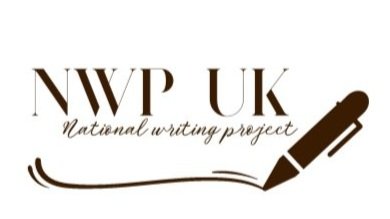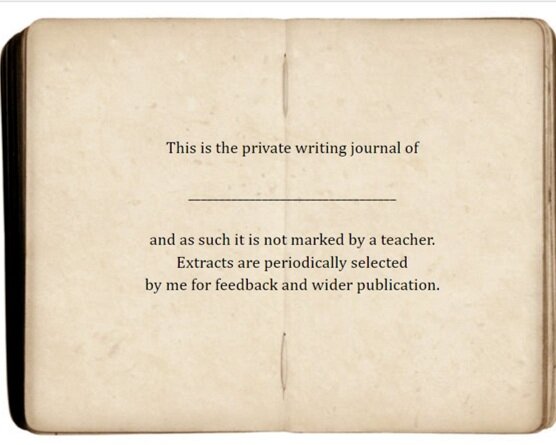Secondary English teacher Theresa Gooda writes about the benefits of a writing journal approach, and why right now is a good time to introduce or relaunch them.
I am enthusiastic about the value of using writing journals in the classroom, and have spent time considering how to introduce and develop their role. These are ideas that have been built up over around a decade of experimentation in Key Stage 3, 4 and 5 classrooms (though what I was doing in terms of writing teaching for the first ten years of my teaching career prior to that is anybody’s guess).
But I was recently asked by a PGCE student about where she might find out more about writing journals, and I was forced to confront what I think I ‘know’ about them - and where indeed I ‘know’ it from!
It turns out, of course, that my thinking is heavily informed by NWP writing, and specifically ideas in Introducing Teachers’ Writing Groups and Writer’s Notebook though there are some other influences in there, too.
Choosing a notebook
I ‘know’, for example, that students should be encouraged to choose their own notebook to use, or make one, rather than being given an ‘ordinary’ exercise book as a writing journal. In part this is an initial signifier that the journal represents something different from other school ‘work’. It has an identity unique to its writer that denotes something about ownership of the writing it contains. It is the size and shape that the writer wants it to be, not dimensions that have been imposed on them. It is playful. It is the place where students, and teachers, can develop their writing voice and ‘where you can flex your muscles in many different ways’ (Smith & Wrigley, 2016: 52); it is ‘a conversation with yourself’ (Ibid., 53).
Resistance
I ‘know’ that it is hard to set up initially, and needs to be used regularly if it is to be habit forming. It is sometimes hard to coax students into a new way of working and a new way of writing. Some students are resistant, and not ready to see its usefulness (Ibid., 53). But it is always, always, worth the effort in the end.
No marking
I ‘know’ that this book should not be marked. If it really is a journal then it is private, and can’t be subjected to the same kind of scrutiny that other school exercise books would. If the writing is truly to be free, then students have to know that I am not looking over their shoulder. I can’t ‘perform’ writing if I am being watched at each stage of the process - my internal editor would kick in before anything really fluent or creative arrived on the page. If I can’t do it, as someone who gets paid to write, how can they? Elbow (2000:134) describes the need for what he calls ‘blurting’ that may, or may not, lead onto something more surprising and interesting. I therefore explain that it is a place where students can ‘blurt’. They can freewrite, brainstorm or do anything else related to writing. It is informal and no one else has to read it - ever. There is no need, therefore, to focus on grammar and spelling, unless they are important and you want to. There is no need to be concerned with what are merely ‘secretarial’ aspects of writing (Cox 1994 : 169). The emphasis is on the ‘writeness’ of the writing, not the ‘rightness’ of the writing.
But I also ‘know’ that this approach is controversial. Students may potentially make disclosures in their writing that challenge safeguarding responsibilities. I therefore have a sticker that students put on the inside cover which looks like this:
Choice
I ‘know’ that choice of writing is important (Nagin, 2006). In order to develop their knowledge about writing, students also need opportunities to explore their meta-cognitive thinking in relation to the processes involved in learning to write. It helps then if I write with the students, alongside them in real time, and model mistakes, wrong turns, dead ends. But I also show the bits that I am pleased with, that might develop into something more, modelling that metacognitive dimension.
Sharing
And I know that, after a while, as they grow in confidence, students will want to share their writing, so as indicated on that sticker, I encourage them to share verbally when they are ready, but also to regularly choose something that they have written during one of our writing sessions to develop further and submit as a polished piece - an idea that builds on Graves (2003) who foregrounds the importance of ‘publishing’ during the process of writing, suggesting that for younger pupils this should be one in every five pieces, and for older students one in two or three. He conceives of publishing as some form of binding which can be checked out from the classroom or school library, but remote teaching has opened up the technological possibilities in far more dynamic and less labour-intensive ways.
So, as many of us in the UK return to full face-to-face teaching from next Monday, perhaps now is the time to launch, or relaunch, those writing journals - after all, our students need a way to make sense of the challenges of lockdown and the trials of living through a global pandemic.
References:
Cox, B. (1994) Writing p169-178 in Teaching English edited by Susan Brindley. London: Routledge.
Elbow, P. (2000) Everyone Can Write: Essays toward a Hopeful Theory of Writing and Teaching Writing, USA: OUP.
Graves, D H (2003). Writing: Teachers & Children at Work, Portsmouth, NH: Heinemann.
Nagin, C (2006). Because Writing Matters. San Francisco: Jossey Bass.
Smith, J. and Wrigley, S. (2016) Introducing Teacher’s Writing Groups, Exploring the theory and practice. Oxon: Routledge.


